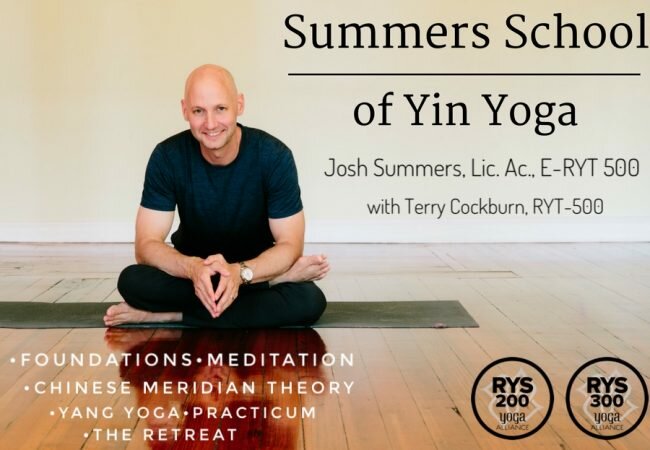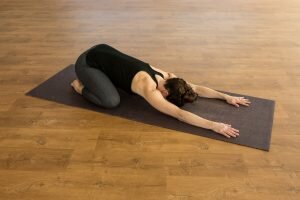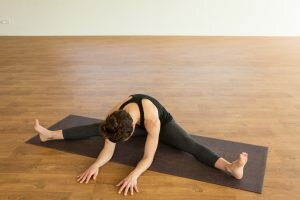A spinal twist can serve as a sigh of relief for your entire being. A reset for the whole body, twisting postures can be both energizing and neutralizing, which can be the perfect antidote for when you’re feeling tired or overworked. Twisting poses affect the major joints including the hips and shoulders, as well as the surrounding muscles, ligaments, tendons and connective tissue, and help to restore and maintain the spine’s natural range of motion. B.K.S. Iyengar described twisting as a “squeeze and soak” action, as it pertains to the compression of the internal organs and the flow of freshly oxygenated blood upon release, stimulating circulation and releasing tension.
As we find ourselves in the forward momentum of the holiday season, taking the time to metaphorically wring out like a washcloth can have a cleansing and refreshing effect on the body and mind. Endurance athletes coming off a busy race season and entering the transition or base period of training can experience dramatic physical and energetic benefits from a twisting practice in the health and function of the spine and nervous system. Spending time in twisting postures in a passive manner as we do in the Yin Yoga practice, can be an invitation to drop inward and gain clarity and a fresh perspective, which can result in a more peaceful state of being. Now, who wouldn’t benefit from that this holiday season?!
This month’s Yin Yoga sequence can be practiced in its entirety, or can be “cherry picked”, by selecting a few postures to practice each day. Twisting also aids in digestion, so if your holidays involve feasting, help yourself to a few of these poses to assist in that process.
How to practice
There are three main principles of Yin Yoga. First, we come into a shape and go to the first point of resistance, and from that mild “edge” of sensation, observe what is being felt. The sensation should be no more than a mild, dull ache, and not gravitate toward anything sharp, stabbing, or burning.
The second principle is to remain still. With the muscles relatively relaxed, the stress will transfer to the denser connective tissues. Keep in mind, you are not fixed in a single spot for the duration of the pose. Do be sure to change the angle of the pose to accommodate for any release, or to back away from a sensation that becomes too intense.
Lastly, yin postures are held for longer periods of time. Postures can be held anywhere from three to even 20 minutes, but start with a time frame that makes sense for you, honoring the foregoing tenets.
Practice the postures sequentially as listed, allowing for 3-6 minutes in each pose. The postures that are suggested to be practiced in a series can be held for less time if needed. Get creative with how you sequence, and be sure to give yourself at least 1-2 minutes between postures to rest in a prone or supine savasana, observing the effects. Static, muscular holds, and even some slow, controlled dynamic movements are also appropriate ways to transition. It is normal to feel some fragility as you exit a posture, and that sensation may stay present for a minute or two
The Sequence
1. restorative twist with breath. From a lying position, draw your right leg across the body, allowing the lower leg to rest on a bolster. Hips will stack, and the upper body will draw toward the floor to create a gentle spinal twist. Rest the left hand on the abdomen and bring awareness to the breath. This pose is intended to be restorative and pacifying in nature. Let there be a restful quality to the body as you steady the mind with even, full abdominal breathing.
2. tadpole. Fold the upper body over the thighs with the hips settled toward the heels. Extend the arms forward.
2(a). twisting tadpole. From tadpole, walk the hands over to the right any amount that allows for sensation to be felt along the side body. Repeat on the left side.
3. inside the dragon. Step the right foot forward, planting the hands inside the right leg on the floor or on blocks to target the hip flexor of the back leg, and possibly the groin/inner thigh of the left leg. Hands can be placed on the inside of the right foot, and the foot walked out wide to allow for sensation in the right groin.
3(a). twisting dragon. From inside the dragon, place the right hand on the right thigh and begin to rotate the torso, inviting a heaviness to the back leg, which may create a different line of sensation along the left thigh. As the right leg is gently abducted, the foot may peel off the ground, and there may be more sensation along the inner line of the right leg. The left hand or forearm is on the floor or a block. Repeat 3 and 3(a) on the left.
4. collapsed swan. Targeting the outer hip, take the right knee forward, allowing for external rotation of the thigh, and let the right hip sink to the floor. In doing so, the back leg will pull in slightly, allowing the legs to take on a “pinwheel” shape. Incline the torso over the right foot and fold forward.
4(a). twisting swan. From collapsed swan, align the back leg straight behind you, uprighting the torso. Walk the arms forward and thread the left arm under the right, allowing the left deltoid to rest on the floor, head on floor or block and wrapping the right arm around the body, resting the hand on the low back or holding the right foot. Repeat 4 and 4(a) on the left side.
5. sphinx. Place the elbows under the shoulders, keeping the legs relaxed. The Head may be kept in a neutral position, fall forward, or rest on a block.
5(a). seal. Transitioning from Sphinx, fully extend the arms, moving the hands toward the body any amount that allows for an appropriate amount of sensation to the lumbar spine. Hands may turn in or out.
6. shoelace/eagle arms. Wrap your right leg on top of the left as shown, or cross the shins if there are discomfort in the hips and/or knees. Sit on a blanket or block if needed. Wrap the left arm on top of the right and elevate the elbows, keeping the posture tall and steady for a minute or so. Allow the mind to scan the body and breath.Make the pose passive by folding forward, allowing the elbows to rest on the knees, on blocks, or on the floor.
7. 1/2 shoelace inside leg. From the shoelace, straighten the bottom leg, drawing it slightly to the right, unwrap the arms, and allow the torso to fold over the right leg. This posture may invite sensation along the backline of the straight leg, the outer right hip, the spine, and the right QL region. Repeat 6 and 7 on the left.
8. dragonfly side body. Take the legs wide and let the right armrest on the ground or elbow up on a prop, supporting the head, as shown, with the left arm draping overhead to invite sensation along the left side of the trunk. Repeat on the left side.
9. dragonfly center. After the lateral positions to the right and left, allow the upper body to fold forward, resting the palms, forearms, or torso on the floor. The sensation may be felt along the inner lines of the legs or along the backline of the body.
10. 1/2 stirrup on the bolster. Place a bolster under the sacrum and draw the right leg in, holding the outside of the foot as shown, or catching hold of the knee. Allow the left leg to be fully relaxed. Repeat left side. (this can be an alternative to dragon pose, as it targets the groin of the leg drawn in, and can stimulate the hip flexor of the extended leg)
11. psoas release. Extend one leg (as shown), or both legs at the same time. This will create a spinal extension and a lengthening to the front line of the body. This can be done in conjunction with 1/2 stirrup, or as a stand-alone pose.
Photos by Cindy Giovagnoli
Disclaimer: Not all yoga poses are suitable for all persons. Always consult your health care provider and obtain full medical clearance before practicing yoga or any other exercise program. The information provided in this blog is strictly for reference only and is not in any manner a substitute for the medical advice or direct guidance of a qualified yoga instructor.












